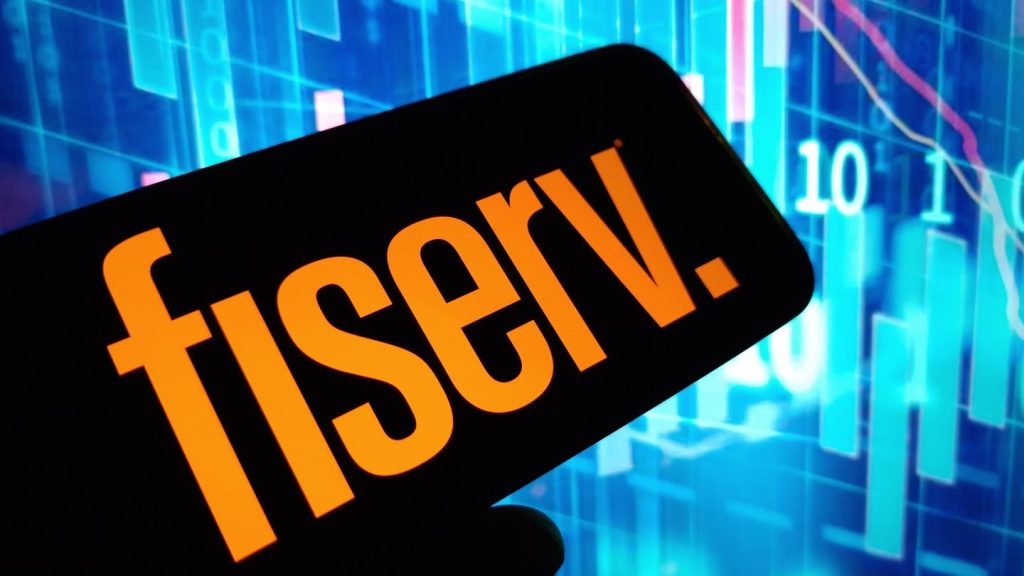Brexit, Trump, and what seemed like a new celebrity obituary on a near-daily basis: if 2016 taught us anything it was that predicting the future is not for the faint of heart. Undeterred, four brave industry figures took the plunge and gave EPI their forecasts on what 2017 has in store for the payments space
Chris Davies, president, Europe, Global Payments
In 2016 we saw strong growth in contactless and online payments. While we expect this trend to continue into the next year, there are several other developments which will make 2017 another interesting year for the payments industry.
Contactless has now moved into the mainstream, with the number of payments increasing month-on-month. In July, monthly contactless card spending passed the £2bn ($2.5bn), mark with 19% of all card payments being made using this technology.
As more and more people get used to services like Apple Pay and Android Pay, as well as paying for their daily commute with their contactless card, we anticipate this trend to continue over the next year.
Similarly, we have seen e-commerce continue to outpace face-to-face transactions. According to the Centre for Retail Research, online retail sales in the UK have grown from £52.25bn in 2015 to £60.04bn in 2016, a rise of almost 15%. E-commerce is a critically important growth area, and although omni-channel payments have not evolved properly yet, we expect to see new record numbers next year.
Looking to 2017, the importance of wallets and app payments will continue to rise. This is fuelled by more and more individuals happy to pay with their smartphones, with companies like MasterCard and Visa developing innovative wallet propositions.
In addition, we anticipate an increased focus on reward and loyalty programmes with smartphone providers such as Samsung and Apple, together with other technology companies, currently integrating these services into their payment applications.
2017 will also bring innovation as firms will have to become compliant with and respond to new regulations covering the payments industry. We expect a whole new payments landscape to develop over the next year as a result of the Revised Payment Services Directive (PSD2), as the banks’ monopoly on their customers’ account information and payment services disappears.
PSD2, which has to be implemented by all EU member states by January 2018, is a fundamental piece of payments related legislation aiming to increase competition, establish new types of payment service, and enhance customer protection as well as security. The directive will encourage the emergence of new players as well as the development of innovative mobile and internet payment services.
For example, PSD2 will enable third parties to access transaction data from banks and send it back to consumers in innovative, informative and functional ways. Customers could sign into their individual Google accounts and view all relevant banking information on one platform. With this ‘consolidated Google bank account’ customers could view all of their accounts in one place, move their money between them more easily and therefore better manage their financial affairs.
The payments industry has always been highly competitive and fast-moving, and even though current trends such as contactless and mobile are expected to remain to the fore, next year will see the pace of change and innovation quicken, mainly driven by regulatory reforms.
Bethan Cowper, head of global marketing, Compass Plus
As 2017 gets underway and we begin to prophesise for the future, we start to make educated guesses based on informed insights as to what is in store for payments.
In light of this perpetuating question – and perhaps in spite of it – what we should be asking this New Year, is not “What is new for payments?” but instead “What is old? What is holding us back? What hurdles must we overcome?”
We know card uptake is increasing globally year-on-year, as card-carrying consumers add more variation to their wallets and the unbanked population continues to decline thanks to the availability of, and accessibility to payments products.
We know cash isn’t dead or dying, but choice across channels is growing as we continue to embrace contactless, NFC, biometrics and, for some, niche technologies like wearables. In 2016, I would argue we have also learnt that as the world becomes more electronic in terms of making payments, regional disparities are actually becoming more apparent, rather than human behaviours more cohesive.
Different people have different habitual characteristics, whether based on demographics, geography, religion or socio-economics, and this disparity is clear. How can financial institutions across the globe rise to the challenges that customers, geographies, politics and regulations will bring in 2017? This brings us nicely back around to the question: “What is old?”
2016 taught us that while old is good – better the devil you know than the devil you don’t – it will not last forever. High-profile system crashes, well-known banks with mobile apps that stopped working, customer data being stolen left, right and centre, hackers attempting to steal huge amounts of money, banks failing stress tests and massive internet banking downtimes all suggest that perhaps it is time for FIs to future-proof their payments infrastructure, and subsequently, their business.
In 2017, we should therefore see FIs investing more in their back-office systems. The recent trend toward new payments technologies has led to an emphasis on resources at the front-office side, regardless of the knock-on strain this brings to the back end.
In order to fulfil the digital transformation promises being made to their customer bases, FIs will need to take more interest in the capabilities and shelf-life of the backbone architecture that enables these modern functionalities.
The growing regulations that must be adhered to with transparency around compliance, the sheer volume of transactions, and complex workflows that increase operational risk have led to the need for efficiency, to bring FIs control over the entire payment lifecycle, from initiation to settlement.
The reputational risk is too high not to address these issues, building the best technological and strategic platform to move the business forward. Transformation needs to take place at a platform level in order to overcome the constraints legacy platforms still threaten.
While there is open resistance to large-scale, expensive and sometimes disruptive in-house technological change, a scoping study to identify and prioritise the modernisation process, starting with the functions that contribute to business growth, can go a long way to getting all stakeholders on board.
With a clear understanding of business-critical issues and a strategic road map in place, incremental changes can be made in order to satisfy operational, functional and budgetary requirements. For some FIs, this may involve working with partners or even outsourcing certain capabilities in order to maintain control, while retaining the ability to quickly offer new products and services.
The payments landscape has never been more exciting or fluid, and, in 2017, the hope is that FIs future-proof their technology infrastructure to ensure that they can support whatever may be hiding around the corner.
Mark Roper, commercial director, Collinson Group
Are banks doing enough to protect their customers’ identities?
In the last year more than 700m customer records were leaked due to data security breaches and cyberattacks.
While these figures, and the cyberthreat itself, are not limited to financial services, banks are investing more, and working harder than ever to ensure they have robust systems in place to withstand the threat of these kinds of attack. Consumers see this type of support as a valued service which would not only protect them, but also help build trust and loyalty with their bank.
For years, financial service companies have provided add-ons to accounts and cards that protect someone’s TV when it stops working, a vase when it gets broken, or luggage when it gets lost. But when a customer’s identity gets stolen there is little protection for them in place, either to help resolve the matter quickly or to stop it happening again.
In the digital age, when more and more of our personal data is stored online, it is a missed opportunity not to provide identity-theft protection on a card or account, or within a loyalty programme. It is certainly not due to a lack of demand.
We polled 6,125 of the top 15% of earners globally (the affluent middle class), and found that of those consumers who already subscribe to an ID protection service, only 13% purchase, or receive it from their bank. They are much more likely (22%) to go to specialist providers for this kind of product.
Banks help us protect our homes, our cars and our families as a matter of course. Now they should start helping us protect our identities, our personal data, and from fraud.
Educating customers to be more aware of the importance of online monitoring and protection, and offering supporting products, to help customers take action, will help banks to re-establish trust with their customers, drive a better digital customer experience whilst building brand loyalty.
Oren Levy, CEO, Zooz
I don’t think I am going out on a limb when I say that 2016 was a year of surprises. First there was Brexit, whose impact on fintech activity in Great Britain and the EU economy has yet to be felt. Then there were the US elections which could lead to changes in privacy regulations and other financial sectors. At the moment, just about the only thing that is certain is that there is no certainty.
When it comes to fintech and payments in 2016, there has been endless discussion about pending EU regulations, mobile phone payments, security breaches, big data, P2P payments, and a slew of other topics.
Nevertheless, anyone closely following the global payments industry will probably agree that there has been little innovation in this area during the last few years. The most we have seen is new enterprises that strive to emulate the highly successful ‘stripe or square’ payment processing models.
We have not witnessed any real effort to galvanize current structures and create new payment equations due to the fact that up until recently, the existing paradigms have been capable of keeping pace with developing e-commerce payment needs. Domestic payments were processed via the traditional back-office flow via a gateway, one acquirer, a limited number of credit card issuers and banks.
But today, the expansion to global markets entails far more extensive payment capabilities. It is no longer enough for a payment solution to be able to process payments via a single acquirer, optimise routing and generate data.
Due to rapidly evolving merchant needs in growing global markets, payment solutions must be able to provide considerable added value such as machine learning, rule-making capabilities, data transparency, real-time adjustment of fraud screening, actionable data analytics to discover and correct inefficiencies, and more.
Many cross-border enterprises are discovering that legacy payment systems that did the job in the past are incapable of integrating with the necessary third-party providers to move forward.
The fintech industry is highly innovative by nature. In the last few years we have seen the rise of digital banks and blockchain, which are shaking up traditional finance and banking methods. We have also witnessed a shift in the types of payment being used at different locations, with P2P and alternative payment methods steadily gaining strength.
Another interesting phenomenon is the elimination of classic components of the payment flow, such as desktop shopping with credit cards in bankless countries like India and Africa, where mobile payments prevail.
I believe that the demand to meet new challenges and the relentless search for even more frictionless payments will soon trigger new partnerships and joint undertakings among various fintech players.
For example, a payment provider might seek to join forces with an enterprise that offers cutting-edge, real-time fraud solutions to develop a seamless, end-to-end product. Or an innovative consumer credit solution may decide to revolutionize its current capabilities by linking itself to an advanced payment platform to simplify processing.
These are just two examples of possible joint projects. There are many other fintech industry entities that could well merge their skills and offerings to further disrupt the industry and create completely new payment paradigms.
One thing is clear to all players in the field: The payments space cannot afford to lumber along at a monolithic pace. It must be able to anticipate new trends and possess the agility to create cutting-edge solutions at lightning speed.







